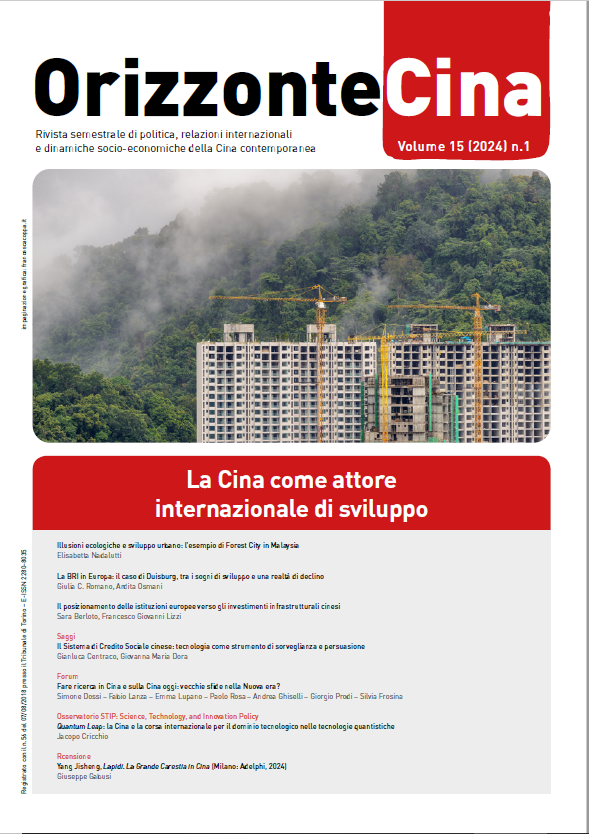La BRI in Europa: il caso di Duisburg, tra i sogni di sviluppo e una realtà di declino
DOI:
https://doi.org/10.13135/2280-8035/10149Abstract
Da ormai due decenni la Cina è diventata un punto di riferimento per le economie di molti paesi in via di sviluppo. Dall’Africa all’Asia Centrale, dal Sudest asiatico all’America Latina, molti circoli accademici, politici ed economici vedono nella Cina non solo una fonte importante di investimenti e altri sostegni allo sviluppo, ma anche un promotore di modelli ed idee alternative da imitare. Questi aspetti sono ben noti alla letteratura dedicata alla cooperazione Sud-Sud e agli studi sull'implementazione locale della BRI. Meno note sono invece le prospettive dei paesi sviluppati, ed in particolare delle realtà locali coinvolte nella nuova Via della Seta. Questo studio si propone di esplorare il caso di Duisburg, un esempio interessante di città europea che ha accolto la BRI come grande opportunità di sviluppo. Un tempo importante centro per la produzione dell’acciaio, oggi realtà in declino della Germania occidentale, a partire dagli anni 2010 Duisburg è diventata uno snodo importante della Nuova Via della Seta in Europa, segnalato anche dalla visita del Presidente Xi Jinping nel 2014. Questa analisi illustra come le autorità locali abbiano cercato di far leva sulla collaborazione con la Cina per plasmare nuove prospettive di crescita, e i risultati della loro iniziativa, fornendo in questo modo un quadro esaustivo delle dinamiche economiche e degli impatti locali derivanti dall'adesione alla BRI.
##submission.downloads##
Pubblicato
Fascicolo
Sezione
Licenza
Copyright (c) 2024 OrizzonteCina

Questo lavoro è fornito con la licenza Creative Commons Attribuzione - Non commerciale - Condividi allo stesso modo 4.0 Internazionale.




